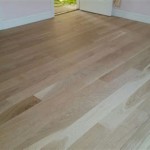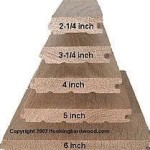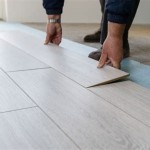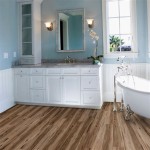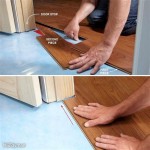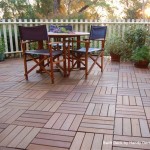Handsed Hardwood Flooring: A Detailed Examination
Handsed hardwood flooring represents a nuanced and increasingly popular segment within the broader hardwood flooring market. Unlike machine-finished or prefinished options, handsed flooring emphasizes manual craftsmanship, resulting in unique surface textures and visual characteristics. This meticulous approach often translates to a higher aesthetic appeal and contributes to a feeling of authenticity and individuality within a space.
The term "handsed" refers to the process of manually altering the surface of the wood to create variations in texture and appearance. This can involve using various tools and techniques, each contributing to a distinct final product. While the term is often used interchangeably with "hand-scraped," it encompasses a wider range of manual finishing processes, including hand-planing, hand-distressing, and hand-texturing.
The selection of handsed hardwood flooring requires careful consideration of several factors, including the type of wood, the specific hand-finishing techniques employed, and the desired overall aesthetic. Understanding these elements is crucial for making an informed decision that aligns with the intended design and lifestyle of the space.
Understanding the Handsed Process: Techniques and Variations
The core of handsed hardwood flooring lies in the manual techniques applied to the wood surface. These techniques are not standardized and can vary significantly depending on the manufacturer, the wood species, and the desired aesthetic. This variability is what gives handsed flooring its unique character and allows for a high degree of customization.
Hand-scraping, one of the most common handsed techniques, involves using a specialized tool, typically a drawknife or a hand scraper, to create subtle undulations and variations in the wood surface. This process mimics the wear patterns of older floors, adding a sense of history and character to the space. The depth and frequency of the scraping can be adjusted to achieve different levels of texture, from subtle and refined to heavily distressed and rustic.
Hand-planing is another technique used to create a subtly uneven surface. A hand plane, a tool with a blade set into a block of wood, is used to shave thin layers of wood from the surface, creating a slightly irregular texture. This technique often results in a smoother, more refined appearance than hand-scraping, with a focus on highlighting the natural grain of the wood.
Hand-distressing encompasses a range of techniques designed to simulate the effects of age and wear. This can include adding dents, scratches, and wormholes to the wood surface. These imperfections are intentionally created to give the flooring a reclaimed or antique look, adding character and visual interest. Different methods exist for adding distress, from using specialized tools to techniques involving chains or brushes.
Hand-texturing is a broader category that includes various methods of creating tactile variations on the wood surface. This can involve techniques such as wire brushing, which removes the softer grain of the wood to create a textured surface, or even more artistic and individualized treatments. The goal is typically to enhance the natural beauty of the wood and add a unique tactile element to the floor.
The choice of hand-finishing technique will significantly impact the overall look and feel of the finished floor. Understanding the nuances of each technique is essential for selecting a handsed flooring option that aligns with the desired aesthetic.
Wood Species and Their Impact on Handsed Flooring
The choice of wood species is a crucial factor in determining the overall look, durability, and performance of handsed hardwood flooring. Different wood species have varying grain patterns, hardness levels, and color variations, all of which are accentuated by the hand-finishing process.
Oak, both red and white, is a popular choice for handsed flooring due to its hardness, durability, and readily available supply. Oak's prominent grain pattern is often enhanced by hand-scraping and other texturing techniques, creating a visually appealing and durable floor. White oak is generally considered more water-resistant than red oak.
Hickory is another exceptionally hard and durable wood species that is well-suited for handsed flooring. Its pronounced grain patterns and color variations make it a visually striking choice, particularly when paired with hand-distressing techniques. Hickory is often chosen for its rustic and character-rich appearance.
Maple, while generally harder than oak, has a finer grain pattern and a more uniform color. This makes it a suitable choice for those seeking a more subtle and refined handsed look. Hand-planing and light hand-scraping can enhance the natural beauty of maple without overwhelming its delicate grain.
Exotic wood species, such as Brazilian Cherry (Ipe), Walnut, and Tigerwood, are also used in handsed flooring. These species offer unique color variations, grain patterns, and hardness levels, allowing for a wide range of design possibilities. However, exotic wood species are often more expensive and may have different sustainability considerations.
The specific characteristics of the wood species will interact with the hand-finishing techniques to create a unique and individual flooring product. It is important to consider the desired aesthetic and performance characteristics when selecting the wood species for handsed hardwood flooring.
Installation and Maintenance of Handsed Hardwood Flooring
Proper installation and maintenance are essential for preserving the beauty and longevity of handsed hardwood flooring. The installation process may vary slightly depending on the type of flooring (solid or engineered) and the subfloor conditions. However, some general principles apply to all handsed flooring installations.
Subfloor preparation is crucial for a successful installation. The subfloor must be level, clean, and dry. Any imperfections or unevenness in the subfloor can lead to problems with the flooring, such as squeaking, buckling, or gapping. A moisture test should be performed on the subfloor to ensure that it meets the manufacturer's specifications for moisture content.
Handsed hardwood flooring can be installed using various methods, including nailing, gluing, or floating. The choice of installation method will depend on the type of flooring, the subfloor conditions, and the manufacturer's recommendations. Solid hardwood flooring is typically nailed or glued to the subfloor, while engineered hardwood flooring can be installed using any of the three methods.
Acclimation is a critical step in the installation process. The flooring should be allowed to acclimate to the temperature and humidity conditions of the installation environment for several days before installation. This allows the wood to adjust to its new environment and minimizes the risk of expansion or contraction after installation.
Maintenance of handsed hardwood flooring involves regular cleaning and occasional refinishing. Regular sweeping or vacuuming is necessary to remove dirt and debris that can scratch the surface of the flooring. Avoid using abrasive cleaners or harsh chemicals, as these can damage the finish. A damp mop with a mild wood cleaner is typically sufficient for cleaning the floor.
Refinishing may be necessary after several years of use to restore the original beauty of the flooring. The frequency of refinishing will depend on the amount of traffic and wear the floor receives. Refinishing involves sanding down the existing finish and applying a new coat of finish. This process can be performed by a professional or by a homeowner with the proper tools and experience.
Proper installation and maintenance are essential for maximizing the lifespan and beauty of handsed hardwood flooring. Following the manufacturer's recommendations and using appropriate cleaning and maintenance products will help ensure that the flooring remains in excellent condition for many years.
The selection of handsed hardwood flooring represents a commitment to craftsmanship and individual expression. By understanding the unique characteristics of this type of flooring, individuals can create spaces that reflect their personal style and appreciation for quality.

Beautiful And Durable Oak Hardwood Flooring

Hardwood Flooring The Home Depot

Hardwood Flooring The Home Depot

Hardwood Flooring The Home Depot

Liberty Floors Herringbone 12mm Cork Oak Left Handed Laminate Flooring 521 671 Leader Arredamento D Interni

Elegant Liberty Floors Herringbone Cork Oak Right Handed Laminate Flooring 18 35 Psqm 1029 146 Arks Factory Flooring4discount Com

Hardwood Floors In Split Level Homes Fargo Nd

Impero Golden Chalet Oak Engineered Wood Flooring 1 44m² Pack Diy At B Q

How To Choose Your Bathroom Flooring Maison Valentina

Bamboo Floor Rustic Wood Floors Flooring Dark
Related Posts


